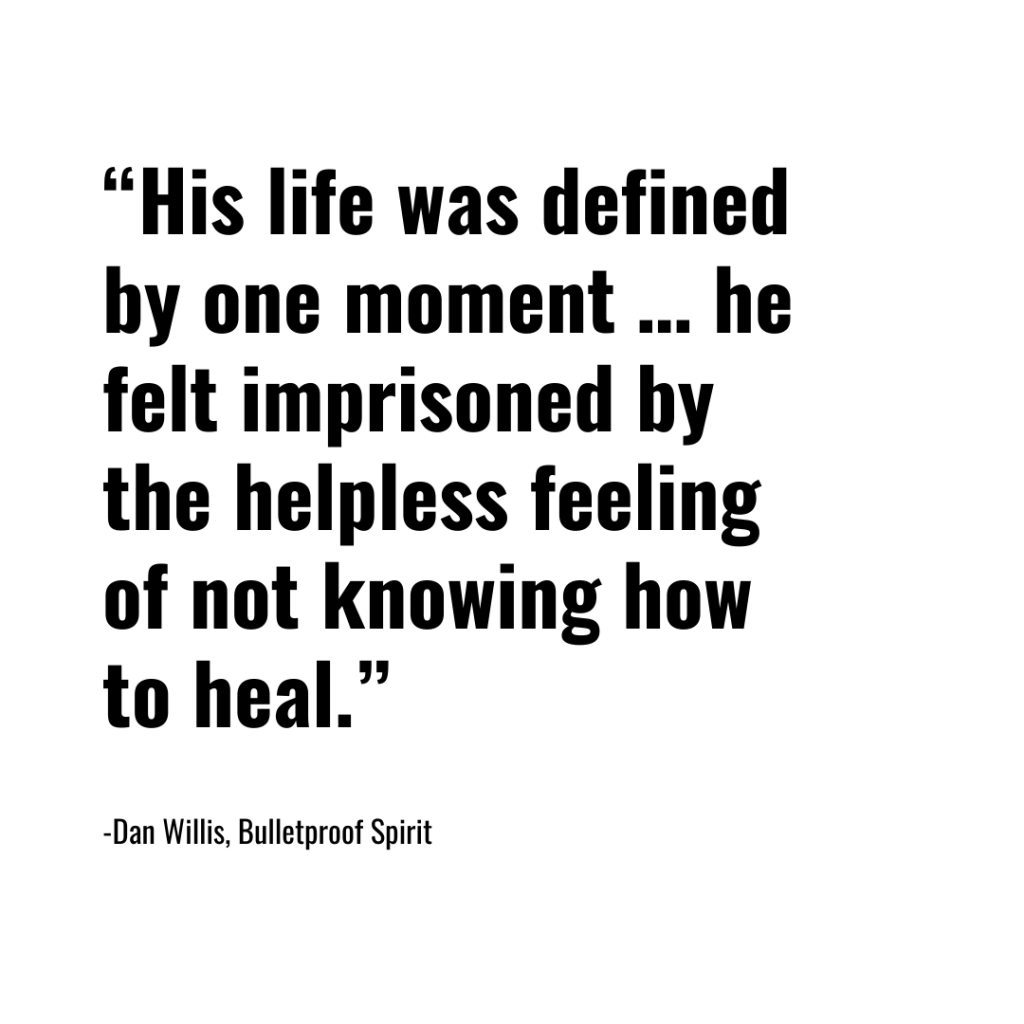“His life was defined by one moment … he felt imprisoned by the helpless feeling of not knowing how to heal.”
This quote from Dan Willis’s “Bulletproof Spirit” captures a reality that far too many first responders face, yet few openly discuss. That moment when a single traumatic event or the accumulation of countless difficult calls begins to define not just your career, but your entire existence.
The Weight of One Moment
As a first responder, you’ve likely experienced it, that call that changes everything. Maybe it was a pediatric emergency that reminded you of your own child. Perhaps it was a fatal accident that could have been prevented. Or it might have been the loss of a colleague who took their own life. These moments have the power to shift your entire worldview, leaving you feeling trapped by emotions you don’t know how to process.
Depending on where you work, if you’re paid or volunteer, it’s estimated that first responders witness an average of between 200-900 traumatic events during their careers, compared to the 1-3 major traumas most civilians experience in a lifetime. Your brain simply wasn’t designed to process this volume of trauma without proper tools and support.
Understanding the Prison
When trauma goes unprocessed, it creates what can feel like an emotional prison. Your mind gets stuck replaying events, questioning decisions, and carrying guilt that belongs to circumstances beyond your control. This imprisonment manifests in several ways:
- The Isolation Cell
You begin to withdraw from family, friends, and colleagues because you believe they can’t understand what you’ve experienced. The thought “they just wouldn’t get it” becomes a wall between you and the support you need. - The Replay Loop
Your brain continuously cycles through traumatic events, analyzing every detail, searching for what you could have done differently. This constant mental reviewing prevents proper healing and keeps wounds fresh. - The Identity Shift
Instead of being someone who happened to experience trauma, the trauma begins to define who you are. Your entire sense of self becomes wrapped up in that one moment or series of moments.
The Biology of Being Stuck
Your brain processes trauma through a complex system involving the thalamus (your mental dispatcher), pre-frontal cortex (logic center), and limbic system (emotion center). During high-stress situations, your brain often bypasses the logic center and sends information straight to your emotional alarm system, the amygdala.
When this happens repeatedly, memories don’t get properly filed with timestamps and context. They remain “undigested” in your mental filing system, ready to be triggered at unexpected moments. This is why certain sounds, smells, or situations can suddenly transport you back to that defining moment with startling clarity.
Breaking Free: The Path to Healing
The good news is that feeling imprisoned by trauma isn’t a life sentence. Healing is possible, but it requires acknowledging that you need tools you may not currently possess. Here’s how to begin breaking free:
- Recognize the Normal Response
Post-traumatic stress is a normal reaction to abnormal events. Your brain is supposed to react when you witness violence, loss of life, or their aftermath. The problem isn’t your reaction, it’s not knowing how to process it. - Understand the Four Domains
True healing involves addressing four areas of your life:
-
- Physical: Your body’s response to stress
- Emotional: How you process feelings
- Mental: Your thought patterns and beliefs
- Spiritual: Your sense of meaning and purpose
- Learn to Unpack Gradually
You don’t have to carry everything alone. Professional counselors, peer support teams, and trusted colleagues can help you unpack your duffle bag of memories in a safe, controlled way. - Practice Grounding Techniques
When trauma memories surface, grounding techniques can pull you back to the present moment. The 5-4-3-2-1 technique (identifying 5 things you can see, 4 you can touch, 3 you can hear, 2 you can smell, and 1 you can taste) can help interrupt the trauma response.
Redefining Your Story
Healing doesn’t mean forgetting what happened or pretending it didn’t affect you. Instead, it means learning to carry those experiences in a way that doesn’t define your entire existence. You can acknowledge the impact while refusing to let trauma be the author of your story. Consider reframing your narrative. Instead of “I’m broken because of what I’ve seen,” try “I’m growing stronger through what I’ve survived.”
Dan Willis reminds us that “behind our badge is our heart, and our heart needs to be steadfastly put into our service for us to survive and be well.” Your heart, your humanity, isn’t a weakness to overcome, it’s your greatest strength and the key to your healing. The journey from feeling imprisoned by trauma to being empowered by your resilience isn’t always easy, but it’s absolutely possible. It starts with recognizing that asking for help isn’t failure, it’s wisdom. Just as you wouldn’t ignore a physical injury, you can’t ignore emotional wounds and expect them to heal properly on their own.
Your Choice: Define or Be Defined
Every first responder will face moments that test their resilience. You have the power to choose your response to what you’ve experienced. You can learn the tools needed to process difficult emotions. You can build the support systems necessary for long-term resilience. And you can discover that healing isn’t just possible, it’s your right. Your life doesn’t have to be defined by one moment or imprisoned by the feeling of not knowing how to heal.

